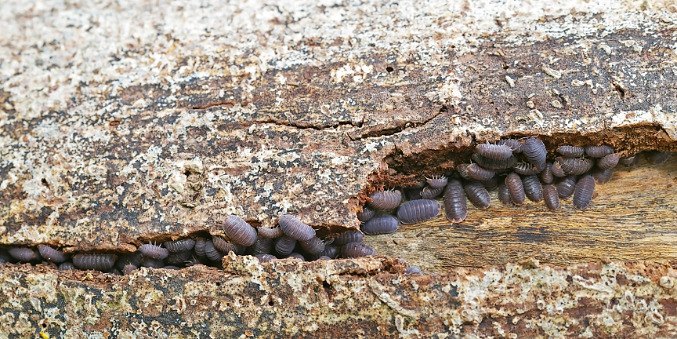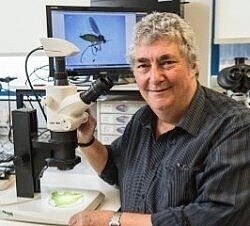
February Bug of the Month: Woodlice
2 Minute Read
Dr Ian Bedford tells us everything we need to know about the 'bug of the month' for February, woodlice. What are woodlice?
Woodlice are one of Britain’s most common and easily recognised invertebrates, and at any time of the year, they can be found sheltering during the day under plant pots, logs and amongst loose brickwork where they can live for up to three years.
Despite having more than 30 species that reside in Britain, they all look very similar, with jointed antennae and an oval-shaped, plated exoskeleton that resembles a medieval suit of armour. However, whilst the majority of species are grey, some will appear brown or even a shade of pink.
Whilst others will also have the ability to roll into a ball when disturbed, which has resulted in them acquiring the common name of Pill Bug or Rollie Poly. Mistakenly, woodlice are sometimes referred to as insects. However, they're crustaceans, related to crabs and shrimps, and belong to the suborder Oniscidea within the order Isopoda.

What is a typical habitat for woodlice?
Despite having evolved from an aquatic environment to survive totally on land around 360 million years ago, woodlice have many closely related cousins that still exist within salt and freshwater habitats. All of these shares similar morphological features, such as seven pairs of legs and blood that contains copper instead of iron, which appears blue when it’s transporting oxygen around their bodies.
Just like the aquatic species, terrestrial woodlice breathe through gills which are located on the underside of their abdomens; these gills are very delicate organs that need to be kept moist and so hence the reason why woodlice are primarily nocturnal and remain at rest in the dark damp locations during the day, often in large groups. It’s within these damp locations that the woodlice breed, and where the females tend to their eggs and hatchlings within a pouch on the underside of their bodies for up to two months.
Just like the aquatic species, terrestrial woodlice breathe through gills which are located on the underside of their abdomens; these gills are very delicate organs that need to be kept moist and so hence the reason why woodlice are primarily nocturnal and remain at rest in the dark damp locations during the day, often in large groups. It’s within these damp locations that the woodlice breed, and where the females tend to their eggs and hatchlings within a pouch on the underside of their bodies for up to two months.

What do woodlice eat?
Venturing out at night to search for decaying organic matter to eat, woodlice play an important role in the natural composting and recycling processes that sustain healthy ecosystems, especially within home gardens. However, decaying organic matter isn’t always available for woodlice to eat in tidy gardens, or a greenhouse for example, and so it’s possible that having no other option, woodlice will feed on living plants and might then be regarded as a pest.
In most gardens, the woodlice will be doing a lot more good than harm, feeding on detritus, particularly the more woody material, and recycling nutrients into the soil through their faeces.
Woodlice also provide a valuable food source for other wildlife that predate on them such as amphibians, birds and spiders. Where woodlice have become a problem, the simple and environmentally safe alternative to using a proprietary woodlouse-killing pesticide, which may then harm other beneficial creatures, is to sweep them up in a dustpan and release them under a hedge or in the compost bin.
In most gardens, the woodlice will be doing a lot more good than harm, feeding on detritus, particularly the more woody material, and recycling nutrients into the soil through their faeces.
Woodlice also provide a valuable food source for other wildlife that predate on them such as amphibians, birds and spiders. Where woodlice have become a problem, the simple and environmentally safe alternative to using a proprietary woodlouse-killing pesticide, which may then harm other beneficial creatures, is to sweep them up in a dustpan and release them under a hedge or in the compost bin.
Bug of the month archive

Bug of the month
Every month Dr Ian shares information on his 'bug of the month', plus tips on how to protect your plants and gardens from preventable pest invasions and provide valuable insights into the insects regularly found in our gardens.
find out more
find out more

About Dr Ian Bedford
Ian has been fascinated by the bug world for as long as he can remember. From studying butterflies on the South Downs as a youngster, he went on to pursue a career in Research Entomology and ran the Entomology Dept at the John Innes Centre in Norwich up until his recent retirement. Ian now works as an independent entomologist offering advice to companies developing environmentally safer plant protection products.find out more
Comments (0)
Why not be the first to send us your thoughts?
